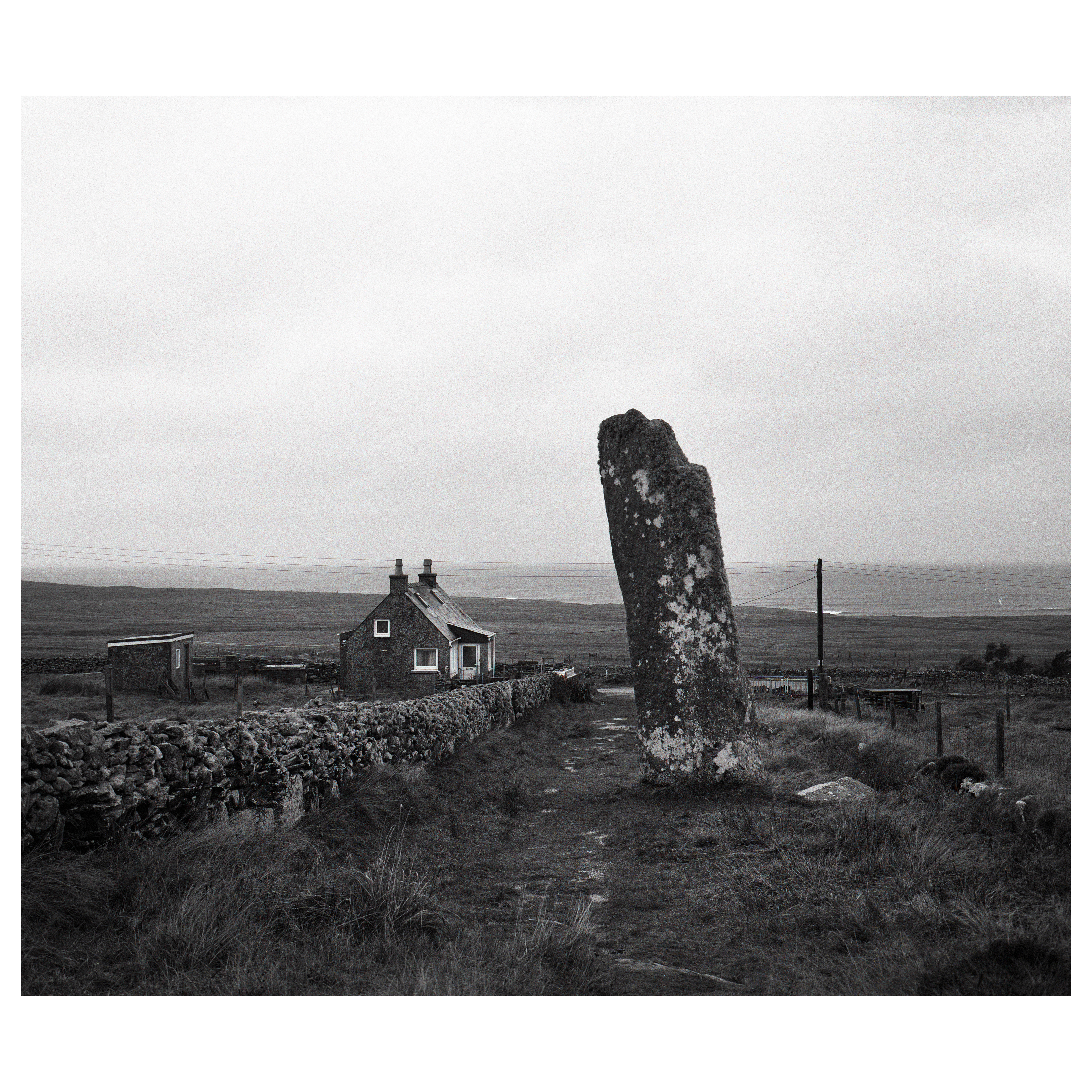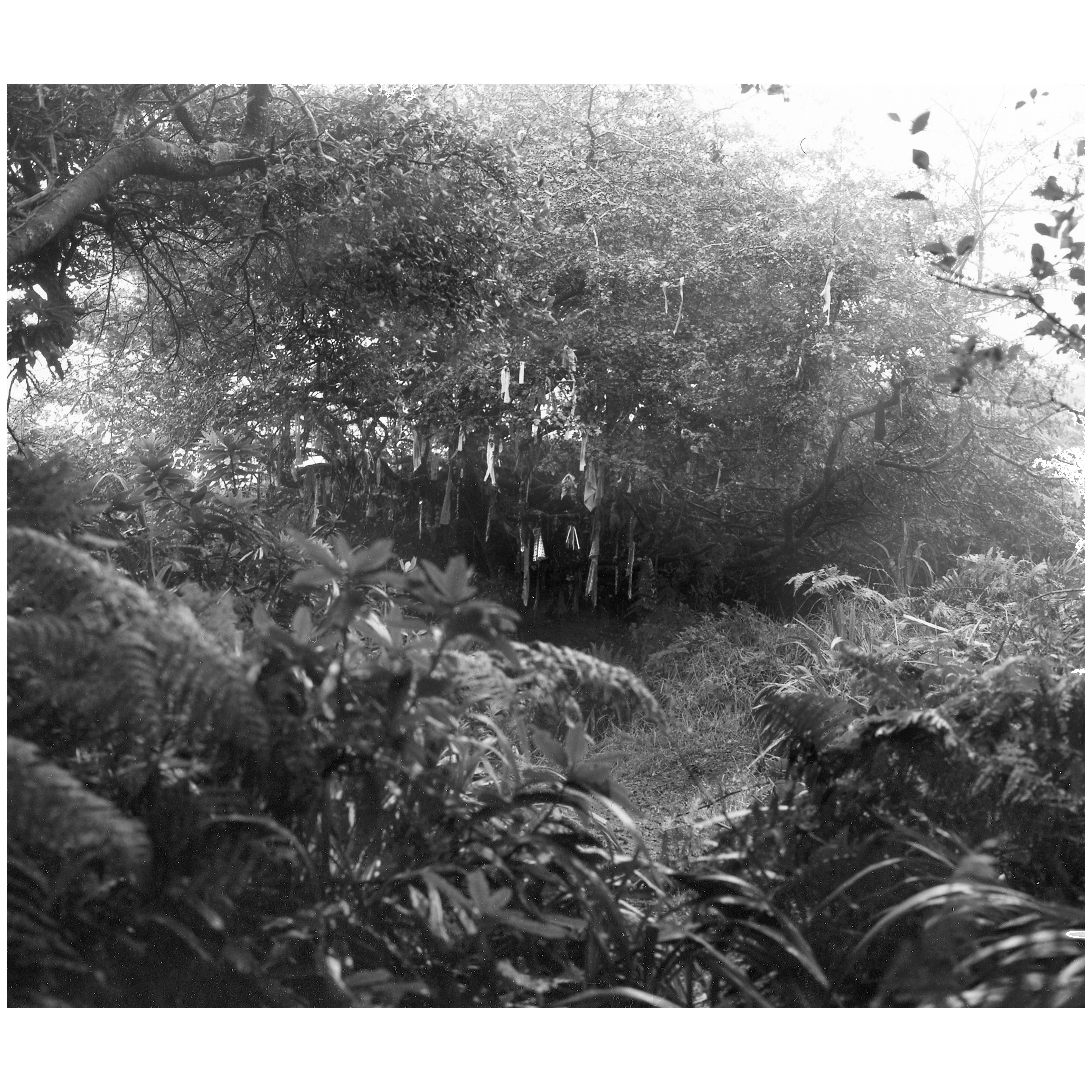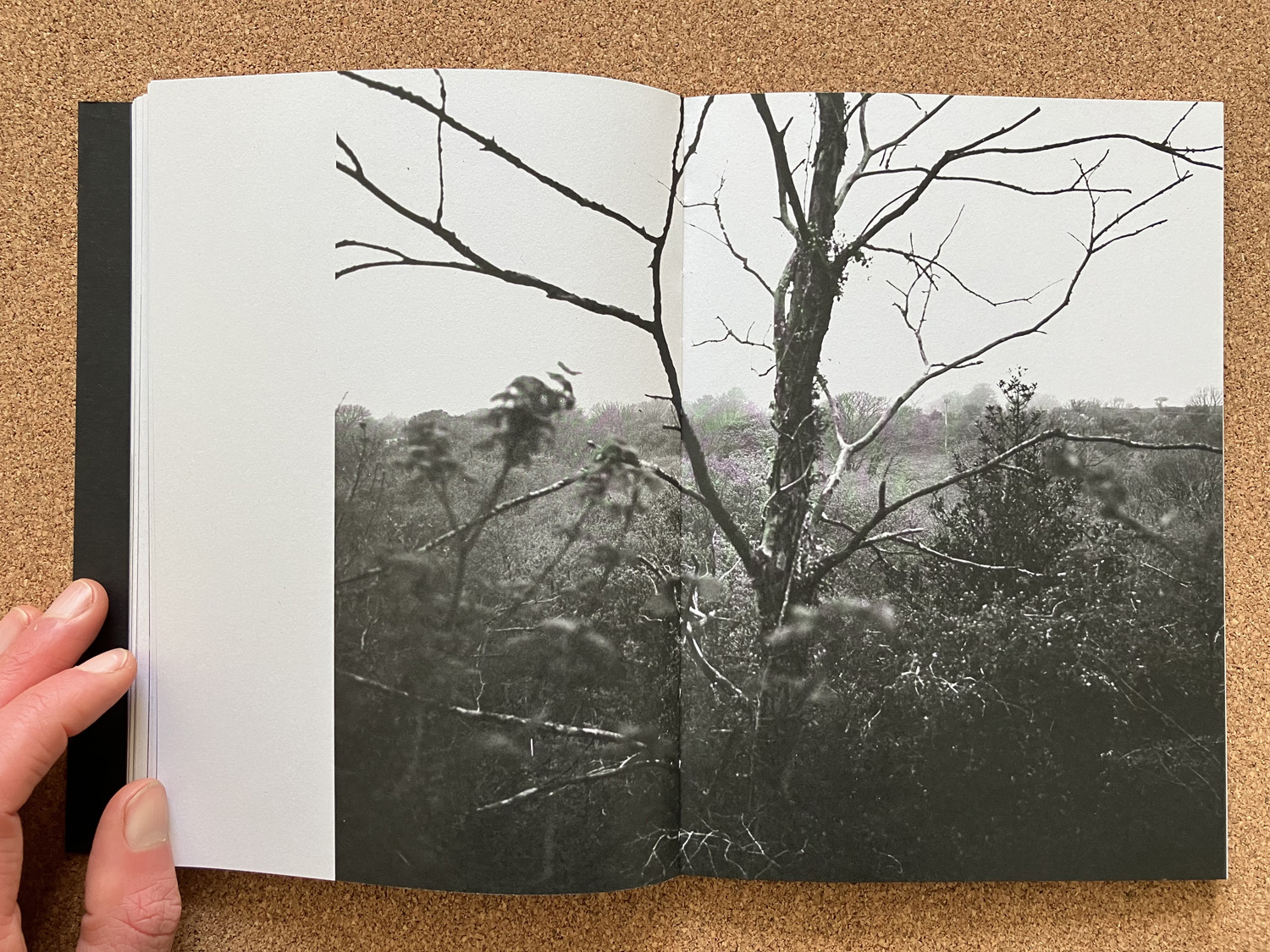




Special Edition Book

















SUNSPOTS SPECIAL EDITION
A special edition of Sunspots with semi-open spine binding so the spreads can lay flat without having to crack the spine of the book.
144pp, sewn section, GF Smith Colorplan Ebony 350gsm cover with white toner, 135gsm GF Smith Colorplan Racing Green end papers, body is Nautilus 135gsm.
Comes with genuine silver-gelatin contact print of the stones film strip on the cover. Ilford Multigrade Portfolio gloss. Signed and Numbered. Edition of 20.

Sunspots Book
Standard Edition
Book with Nissan Micra silver-gelatin print 7x5” (edition of 5)
Book with Tregeseal White Horse silver-gelatin print 7x5” (edition of 5)
Book with Clach An Truishal silver gelatin-print 7x5” (edition of 5)
‘In fundamental ways, Arnold both insists on the antiquity of the places he photographs yet at the same time insisting that the signs and symbols of ancientness become contemporary, and as one with the objects that exist beside the standing stones and ancient configurations of land. It is very much, he seems to insist, a question of meaning — the sentience which we give the inanimate signs of history around us, whether an abandoned tractor, a battered car, or a relic of antiquity. The landscape, William Arnold acknowledges, is infused with histories, both ancient and modern, that no-one fully understands. Photography acts as an identifier, sometimes an interlocuter, creates an expose of riddles, facts that we stumble upon in the distracting mists of time.’
- Val Williams (2022)

"The track here was dank, shadowed by soughing trees full of violence and sadness. I hurried upwards, relieved to get clear of the valley. How much primeval gloom can still lurk almost within earshot of a busy road!"
- Ithell Colquhoun - The Living Stones - Cornwall (1957)
Preface
‘… all the ages are rolled into one, a postmodern bundle of residual beliefs, reinterpreted customs, hazy site myths, ancient stones, recollections and folk tales’
– Phillip Marsden (2014)
Marsden writes here of the West Penwith ritual landscape, but he could just as well be describing large areas of the rural British Isles, particularly the so-called Celtic Fringe of the western Atlantic seaboard.
Over-romanticised and often marketed beyond meaning the island of Lewis & Harris and the almost-island of Cornwall share much in common. Administratively, at time of writing they both belong to the United Kingdom, yet in culture, landscape and even to varying extents language they are territories apart — owned perhaps but not fully assimilated.
Thirty-five of my thirty-nine years have been as a permanent resident of Cornwall. The child of incomers, but surely only the least civic of nationalists would now deny me some claim to Cornishness.
My relationship with Lewis & Harris is flimsier, six weeks or so over nearly as many years begun as a holiday-cum-exercise in artistic professional development.
I had read one of perennial foreword writer Robert Macfarlane’s books in which he talks of the way that information travelled far more freely via the ‘sea roads’ in the pre-industrial era and that consequently geographically distant coastal places tended to have far more in common than much closer inland areas. Along with some knowledge of the strikingly similar prehistoric landscapes of megaliths and a 1990s BBC World Service programme about kids aimlessly driving around in knackered cars while listening to cassette tapes on pre-bridge Scalpay — something that resonated sonorously with a working-class boy from St. Blazey, Par, Cornwall — it seemed sure that this was a place with which I would feel an affinity.

These are hard places, the granite Cornubian Batholith and the Lewisian Gneiss. Durable in geological substratum and stubborn to yield the last of a proud hard-graft dignity and culture to the Sea Spray holiday cottages and Wee Sheiling camping pods.
It seems grimly obvious which is currently winning. There’s no buying a house, no real setting down roots for the next generation. Average house prices now run at eleven times median income in Cornwall and the Stornoway Gazette reports of ‘economic clearances’, evoking the language of historic social cleansing to describe the precarity of living for younger people without capital on the Western Isles.
Both places share a chronic lack of quality employment too. The fishing fleets a fraction of their historic size, buoyed up by Brexit hot-air and sunken down on the reality of quotas and tariffs. Cornish mining, long hoping for a revival still virtually extinct and crofting largely a life-style choice for winter hardy good-lifers burned out from the city job on the mainland and needing to take the air.
It is damp air though and the wind is outrageous even in the summer on Lewis — though at least it stops the midges. You need to come prepared.
So that is now, but what of the relentlessly present past in these places, what of those so-called ceremonial landscapes? The great megaliths and funerary monuments of the late Neolithic and Bronze Age — there are something in the order of 1300 extant stone circles in Britain and presumably there were thousands of other similar henges, circles and burial mounds made of less durable materials the existence of which we will never know.
What is our contemporary relationship with these sites — a sort of ‘bring your own set of beliefs’ set of pilgrimage places?
This seems to be having a zeitgeisty moment — at least to someone who pays attention to this sort of stuff on social media — supporting a thriving subculture, part Ramblers’ Association, part quasi-religious reconnection with the living earth and part light entertainment — screening nights of classic 1970s folk horror.
It could be said that the key dichotomy of the ancient sites and of Lewis and Cornwall more broadly is one of practicality vs romanticism. Many of us clearly need something to believe in, to feel something beyond our physical selves…we seem naturally to want to ascribe to certain landscapes a spirit of place and imbue them with meaning. The circles, dolmens and henges cannot be as my astro-archaeologist friend Carolyn’s T-shirt ironically suggests… ‘JUST A PILE OF ROCKS IN A FIELD’.
Anthropologist Patrick Laviolette writes that…
‘It is pertinent for us to examine how people in Cornwall revive several rueful myths about death and despair or optimistic messages about cultural resurgence. Popular instances include numerous stories and legends about piracy, piskies, witches, haunted manor houses and the Beast of Bodmin Moor. In such cases, the view comes across that this is a region of enchantment, where it is not uncommon for strange or morbid things to take place.’
Lewis & Harris too, especially as the Gaelic language has been preserved to a living extant in a way Cornish has not has one of Europe’s best preserved folk traditions. It is not to be belittled. Lewis is a place scraped together from hard struggle to eke an existence on the northwestern extremity of Europe where the winters are long and to misappropriate a Classical quote attributed to another Celtic tribe…“the drink is the drink of swine and the people burn their very earth for warmth.”

A long history of warring clans, bitter feuds, class struggle and colonisation leads to the feeling, so I’m told by a resident, that two hundred years ago really isn’t a long time in a place like this.
But boring purposeful things happen here too. All the time. On Bragar Moor and over the rest of Lewis rusting vehicles are slowly subsumed into the peat bog. The speedo of a Volvo 340, stopped at 144,546 miles to be preserved for all time like Tollund Man. What will the future thing of these offerings? Will they realise that Angus Campbell just needed somewhere to have a cup of tea sheltered from the rain while out cutting the peats and that when the Volvo’s structural integrity failed, or some local neds smashed the windows in, it was quickly replaced with a P-reg Honda Civic. It is still there, with a worrying number of toilet rolls inside.
As for the stones of Callanish, at Boscawen-Ûn, Men-an-Tol or anywhere else, it is undeniable that they prompt wonder. They are the result of colossal human endeavour but whether they are religious sites, or broadly speaking of worship is a moot point. We will never know for sure, and this is a great part of the allure.
What seems certain though is that the people who built them were trying to make sense of the world around them and as Johnathan Meades writes…
‘They calibrated their place in their surroundings by marking the actual. Where the Sun sets at the vernal equinox; where it rises at the summer solstice, the positions of constellations, the vagaries of the moon. This was practical. This was the first germ of what would become science; curiosity sated by investigation.’
Or as the archdrude Julian Cope would have it.
‘The people who built these places were forward thinking mofos!’
I have been making landscape photographs of these so-called ritual landscapes over a period of around five years, where I have walked and looked and recorded with the influence of Fay Godwin and Keith Arnatt always close by…This Forbidden Land, AREA OF OUSTANDING NATURAL BEAUTY.
More recently I started to produce grid format photographs of the stone circles, after the style of Bernd and Hilla Becher’s typologies of mid-century German industrial architecture.
I supposed at one time that I might find a deeper meaning in these landscapes, but it was always somebody else’s Earth mystery. In frustration, feeling inadequate in my ability feel connected enough to the stones, I sought to strip away all the layers, all the sound archaeo-historical theories and mystical mumbo-jumbo too, perhaps these places were just an exercise in prehistoric OCD after-all.
Reaching for that toolkit of late 20th Century photographic objectivity, everything rendered equal in grid format, using one frame after the next on a roll of film, same exposure, same distance from the stone, circumambulate…click, wind, click, wind, click…an esoteric devotion all of my own.
It seems that ritual is inescapable in these places.

A5 - 144 pages on Nautilus Classic 135gsm
Cover GF Smith Colorplan 350gsm with red foiling.
Essay ‘Mortal Remains’ by Val Williams
ISBN 978-1-3999-4434-2
Printed by Booths Ltd, Penryn.
Bare Pipes Press (2023)
THIS WORK HAS BEEN PART-FUNDED by...
